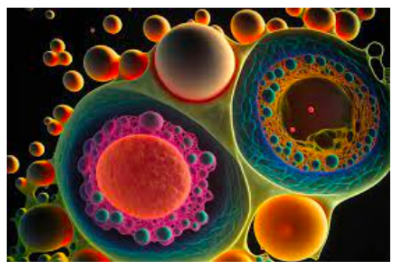Answer:
Approach:
- Introduction: Introduce stem cell therapy as an emerging and promising field in Indian healthcare, highlighting its applicability in treating a range of conditions.
- Body:
- Briefly explain what stem cell therapy is and how it functions, emphasizing its uniqueness in promoting healing and regeneration.
- Elaborate on the key advantages of stem cell therapy.
- Do provide relevant examples.
- Conclusion: Conclude by reiterating the significant potential of stem cell therapy in India, acknowledging challenges but emphasizing its transformative possibilities in healthcare.
|
Introduction:
Stem cell therapy, often dubbed as the ‘medicine of the future’, has garnered significant attention and popularity in India, showing promise in treating various ailments ranging from blood disorders to tissue damages.
Body:
Stem Cell Therapy:
- Stem cell therapy, or regenerative medicine, involves the use of stem cells to repair or replace damaged cells and tissues. Stem cells are unique because they have the potential to develop into many different cell types in the body.
- The body naturally possesses stem cells, but their concentration and potency can wane with age or injury. Stem cell therapy boosts the body’s natural healing mechanisms by introducing or enhancing the presence of these specific cells.

Advantages of Stem Cell Therapy Over Other Treatments:
- Specificity and Precision: Unlike broad-spectrum treatments like chemotherapy, which can affect both healthy and cancerous cells, stem cell treatments can be designed to target specific damaged or diseased cells.
- For example, in the treatment of Leukaemia, stem cell therapy can offer a more tailored approach, replenishing the bone marrow with healthy cells and aiding in faster recovery.
- Reduced Side Effects: Traditional treatments might come with a host of side effects. Stem cell therapy, being more targeted, generally results in fewer and less severe side effects.
- Potential for Treating Previously Incurable Diseases: Some conditions, like Thalassemia, previously necessitated lifelong treatments or had limited therapeutic options. Stem cell therapy opens new horizons for potential cures.
- For instance, Thalassemia patients often require regular blood transfusions. Stem cell therapy offers a chance to address the root cause by aiming to restore the body’s ability to produce healthy blood cells.
- Tissue Regeneration: Stem cells have the potential to regenerate tissues that are difficult or impossible to heal using traditional methods.
- For example, Damaged corneas or severe burns might be irreparable with conventional treatments. Stem cells can foster growth and healing, potentially restoring normal function and appearance.
Conclusion:
Stem cell therapy stands at the forefront of medical innovation in India, offering a beacon of hope for numerous patients. While challenges remain, especially concerning ethical considerations and standardization, the potential benefits of stem cell treatments, marked by their precision, reduced side effects, and regenerative capabilities, undeniably position them as a pivotal advancement in the realm of healthcare.
To get PDF version, Please click on "Print PDF" button.


https://uploads.disquscdn.com/images/12384755d4712f727c361e4d47f2aacef7197896cec62d476ea12277bc3a03bb.jpg https://uploads.disquscdn.com/images/a9645ca7b58f54384fae18a5dc1f7212f4dda337cc5297aa6f64345ca92eebde.jpg https://uploads.disquscdn.com/images/fbdad4bfd28818c5e657adaae1754f8ceb2f930154594a826a71507dfa1965d1.jpg
https://uploads.disquscdn.com/images/4173f03bb2f067a499335ddaa78e70a4e030b4d57f1a64a8205ac3b2a14f7fa3.jpg https://uploads.disquscdn.com/images/686b8e4bad61ff32409090143b166b83f8d043a931472ed4cbea51dff0b9113c.jpg https://uploads.disquscdn.com/images/4fbafe6141c0a888111520aede55e6d87034051f8f0077e78db8022991833772.jpg
https://uploads.disquscdn.com/images/8e6432038eac3805d93121616303dcecab83dc1dc2c401472b64819ec4f2c6a4.jpg https://uploads.disquscdn.com/images/1207d1edbdc9de7bd0490559c52937ebf004be5bdcb231f411044f8ea91d0b29.jpg https://uploads.disquscdn.com/images/fa6f351dfde9532ba9802277be782e762758237da0dd896638f0f368b67d8668.jpg
https://uploads.disquscdn.com/images/9786d614dc8d565e84da9d75885b088befb542f7494aa4e6283196345236bb35.jpg https://uploads.disquscdn.com/images/b93d07f080e12c7b917856c0acd8abec57869be3b0b7901a69f7b074b6ab158a.jpg https://uploads.disquscdn.com/images/840e8c385d9765692b8911e47e704874155f0ec8e9e7815aea72a2ca9d0cd2a1.jpg
https://uploads.disquscdn.com/images/eefc2ede1e7b7cbc35da5140b96b518ba0c8067ea2d1778e4165b46d2a0156e3.jpg https://uploads.disquscdn.com/images/a521c5b72a463f6a7cfa552439f20c628b3486339df9ad82004a034e828813b1.jpg
https://uploads.disquscdn.com/images/102f61cf788319fd217672aa539fefad16fcc018fcd9ddff4adec9b437bae182.jpg https://uploads.disquscdn.com/images/5041d416867f8f492aaa74b505dc9477c48d72155f150eee212ce91bb2513916.jpg
https://uploads.disquscdn.com/images/fa58dba7810cc72f92921e421ef925b530924a12881496d730b1e91747d49ba5.jpg https://uploads.disquscdn.com/images/1b753e3b42f24ecfd01dd04c80eb446b5dca0914a1ea0af8cf87186964e3c238.jpg
https://uploads.disquscdn.com/images/b3ca9d2d99d39620c0dba26a986a472188e42d15e1c1e480a3aa58c1aa2a1b2d.jpg https://uploads.disquscdn.com/images/d73df25a3e4f9955b20a886d3e42d8e5b74599b0298a3b584d83f628b0ffd369.jpg
https://uploads.disquscdn.com/images/f01425249c720e4a53549ea01fa6b47693c45de06e69ed8ae5ac129630813595.jpg
https://uploads.disquscdn.com/images/12185f7e676f4b23a57758e664b15ca472f8496c2cb24cbf8cdbda1954e4fba5.jpg
https://uploads.disquscdn.com/images/57331d2e96b94d2a7e611cc721ffafc7c30146d678e96609b6af2379a147f2d3.jpg
https://uploads.disquscdn.com/images/331f73bfa7ae3c67492ebdb63b79ded1f0c87902c7f6ddcb4bfea48ef341cbc0.jpg https://uploads.disquscdn.com/images/a3926b24256f4dd55fa04cb0b24e6e5db617d23bbd4c5572661595713680b61d.jpg https://uploads.disquscdn.com/images/dc90792c53158fdd9ef29b63c131f0a928fe6e36cf6e6e1ac958329fc1691cc2.jpg